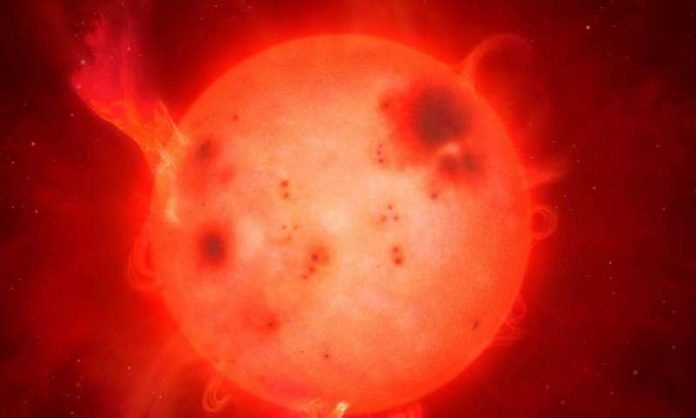
In a new study, researchers found a star as big as Jupiter has an explosion 10 times more powerful than that can be seen on the Sun.
The discovery was done by a team led by the University of Warwick and funded by the Science and Technology Facilities Council.
The team found that this star is the coolest and smallest to have a rare white-light super-flare.
The flares are driven by a sudden release of magnetic energy generated in the star’s interior.
They caused charged particles to heat plasma on the star surface and released lots of optical, UV and X-ray radiation.
Previous research has shown that low mass stars have decreased activity. But the current finding suggests that strong magnetic activity can still occur in a very low mass star.
The current star located 250 light years away and is named ULAS J224940.13-011236.9. It is between being a real star and a brown dwarf, which is a very low mass, substellar object.
If its mass decreases more, it will become a brown dwarf. Brown dwarfs are not massive enough to fuse hydrogen into helium as stars do.
In the past, the researchers could not find the star because it was too faint to be observed via telescopes.
They find it now because of the massive stellar explosion in its chromosphere.
The team used the Next Generation Transit Survey (NGTS) facility at the European Southern Observatory’s Paranal Observatory.
The NGTS telescopes are usually used to search for planets around bright stars.
They also analyzed data from the Two Micron All Sky Survey (2MASS) and Wide-field Infrared Survey Explorer (WISE).
Their analysis showed that the flare gave off energy equivalent to 80 billion megatonnes of TNT, which is ten times as strong as the highest energy event observed on our sun.
The flare makes the star 10,000 times brighter than normal.
The researchers suggest that this is one of the largest flares ever seen on an L dwarf star. L dwarfs are very cool compared to the more common main sequence stars.
They are the lowest mass objects that could still be considered to be a star.
The researchers suggest the new finding provides valuable information about how small a star can be and still display flaring activity in its atmosphere.
The lead author of the study is James Jackman, a Ph.D. student in the Department of Physics.
The study is published in the Monthly Notices of the Royal Astronomical Society: Letters.
Copyright © 2019 Knowridge Science Report. All rights reserved.



